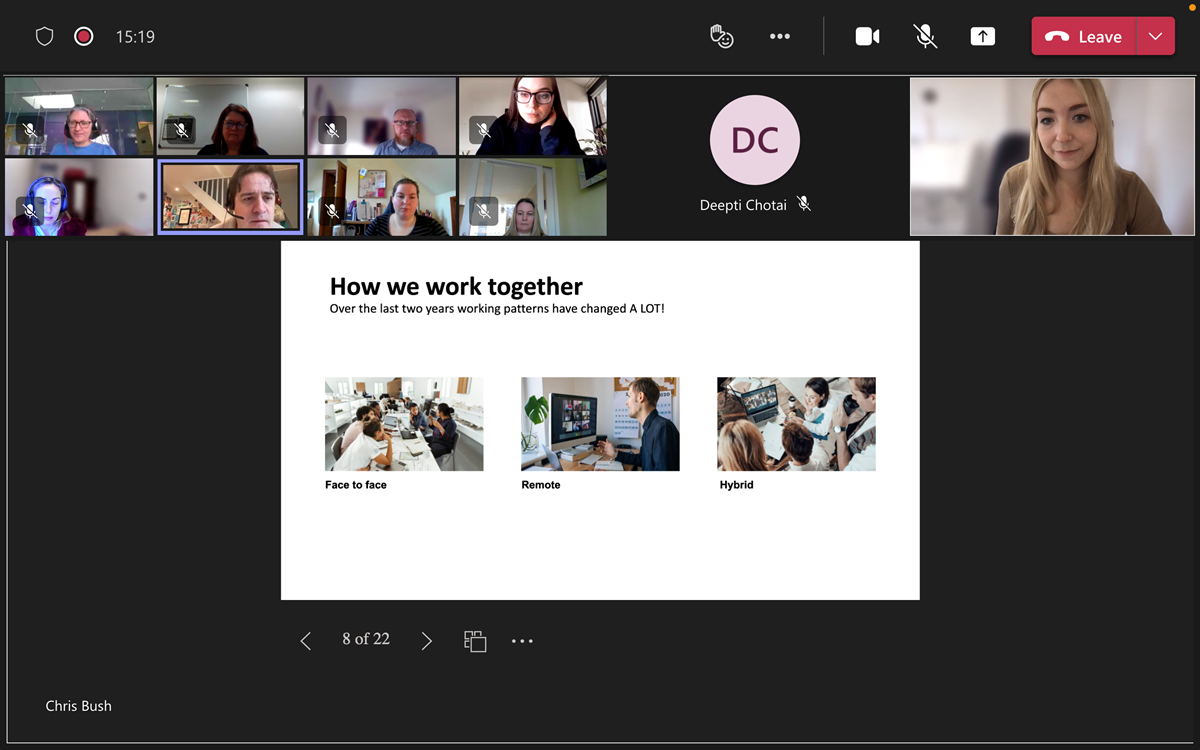Third Sector’s Tech Summit 2022
4 minute read
Sharing our key findings and takeaways from Third Sector's Tech Summit, held earlier this month.
Earlier this month we took part in this year’s Third Sector Tech Summit, gathering with delegates from charities and other industry leaders, to share, understand and learn.
It is fair to say that over the past two years the landscape has changed for charities, especially within the context of income generation and ways of working. This push has thrust organisations to new heights, but that has not come without its challenges. The acceleration of digital tools has supported reimagined services and allowed charities to become focussed on users, beneficiaries, and supporters, so they can meet them where they are, and importantly, at the right time.
From QR codes to data governance, the topics of the day left us inspired and filled with ideas that we can begin developing amongst our team, with clients and as part of communities we’re active in. Collaboration is key to moving forward, and it’s not in our nature to fix problems in isolation. So as a start, we wanted to share some of our findings, takeaways and inspiration points from the day:
Choosing the right behind-the-scenes tech to improve inclusive service delivery
As an increasing number of services have become digitised throughout the pandemic, it has become ever more important to ensure that these services are delivered in an accessible and inclusive way.
James Watson O’Neill, Chief Executive of Deaf Health charity SignHealth gave some excellent insights into the ways his organisation has approached online services in a user-centred way, including ringfencing a substantial portion of funding to offer access to interpreting to deaf people. Lisa Turan, CEO of the Child Brain Injury Trust credited an agile working model as the best way to ensure families were supported in the way they needed.
Core to the conversation around digital accessibility is also the need to bridge the digital skills gap and ensure that services account for digital literacy and confidence. Applying widely used tools like WhatsApp, to reach out to users (with their consent) was a fitting example given of how this approach can work well. It is also a case of organisations being conscious of the fallacy that building new products will always engage users, instead of consulting with them and following them to services they’re already using. Not re-inventing the wheel where it's not needed, and again, meeting service users where they already are.
Lack of access to data or phone credit has also been identified as a barrier to access, something that should always be considered when designing products. Solutions could look like loaning tech and offering access to services via text or call, but again, approaches should be tailored based on what's right for the user and design delivery. Finally, organisations should consider translation and language barriers, and look to offer interpreters, captioning and translation services to increase inclusivity.
Organisations can make use of a wide selection of digital tools to make their work more accessible and more inclusive. It’s important to meet audiences where they are, and being brave and diversifying content is a key way we can do this.
Samir Patel, CEO of Comic Relief spoke about how using digital tools and technologies helped the charity achieve objectives throughout the pandemic. ‘The Big Night In’ quickly raised £70m, by making it easy and accessible for people to take part. They looked at new diverse channels, launching on TikTok and Snapchat, and co-created a comedy series with Joe Lycett. By being relevant and meeting audiences where they are, and collaborating with people with lived experience, allowed Comic Relief to be relevant and current, which boosted engagement.
Fulfilling staff needs in a hybrid environment
When it comes to hybrid working structures, it is vital to support teams with tools and resources to help them collaborate and feel like part of a team. Practices like agile project management have also been beneficial to the hybrid model, with organisations seeing positive outcomes from the switch to home based working.
Craig Jones CRO of the Royal Osteoporosis Society noted since moving to hybrid, the organisation saw staff engagement rise by 8 points when compared to when they were last surveyed. To add to this, service users saw a correlating improvement in service.
It is important to facilitate a connection between staff, both virtually and in the office, not only for work reasons but for wellbeing and support too.
As a follow up to this event, Nexer Digital hosted a seminar where we discussed our hybrid working model with some delegates who said they were interested in knowing more about how we’ve helped created hybrid teams. Our experiences of hybrid working have thrown up some challenges:
- Communication: Sometimes there are too many means of communication and it can be overkill.
- Co-ordination: As we moved into remote working, talking on Zoom, Teams, Slack etc., smaller conversations meant more effort was needed. Smaller water-cooler conversations happened when we returned to the office but there needs to be an emphasis on how those are taken and communicated to remote/hybrid workers.
- Connection: Varying degrees of connectivity and reaching people. Not just typically employees, but clients and test participants.
- Creativity: How do you get people to do their best work? In face to face environments it’s easier to read body language, in mixed environments it can be more challenging.
- Culture: How do you get people to invest in the vision and mission of an organisation and actively participate in working towards this?


We shared how we use the ‘Manual of Me’ methodology to overcome these challenges. This is a tool which aids the process of building effective teams and documents how individuals like to work, both within organisational and project contexts. It features structured questions which allow us to focus in on problems that we’d like to solve, and boosts team spirit and camaraderie.
We took these manuals and refocused our approach on some of the above challenges, such as channels. We learnt that information overload and too many communication channels was overwhelming so that allowed us to restructure and focus our communications structure and process to help our team.
It was clear that more informal ways of socialising were important for cohesion, wellbeing, and morale, and that comfort levels around face to face or remote interaction needed to be considered to ensure these events are inclusive as possible.
Adapting fundraising and supporter engagement tech to maximise and streamline income generation
With the pandemic having a significant impact on income streams, 38% of charities saw their income dented or elevated levels of volatility. As a result, many organisations increasingly switched to digital, which itself offered numerous opportunities to reimagine and adapt fundraising and engagement.
Charities like MacMillan moved away from strategy and used agile methods to diversify their approach, and saw digital as a key way to achieve this by looking to prioritize conversion and lifelong retention of supporters, through moving to a more participatory model.
Moving away from a traditional sponsorship model gives supporters more motivation to donate. It is important for organisations to continually evolve and audit the outreach process, testing ads and combining paid methods with organic reach.
There should be an emphasis on the primacy of the charity brand throughout the fundraising journey and giving supporters a breadth of tools for fundraising does help. Empowering fundraisers with data ownership, allowing them to formulate their own strategies and methods, gives them autonomy to participate and be active within the fundraising community.
In summary
It’s been inspiring to see the ways that digital has been used to rise to the challenges presented by the past two years, and continues to allow organisations to be more agile, accessible and effective in their endeavours. It is encouraging to see the collective drive from charities, social enterprises, agencies and field experts to work together, learn from, and support one another in this ever-changing landscape.

